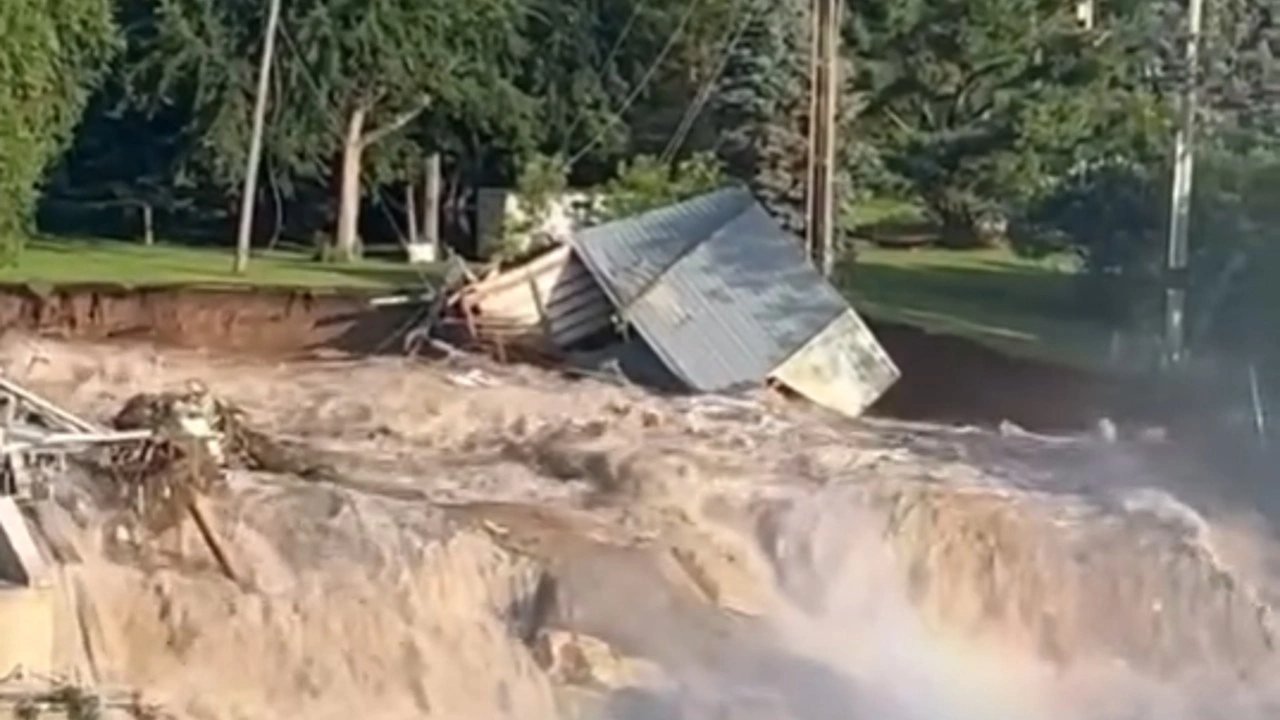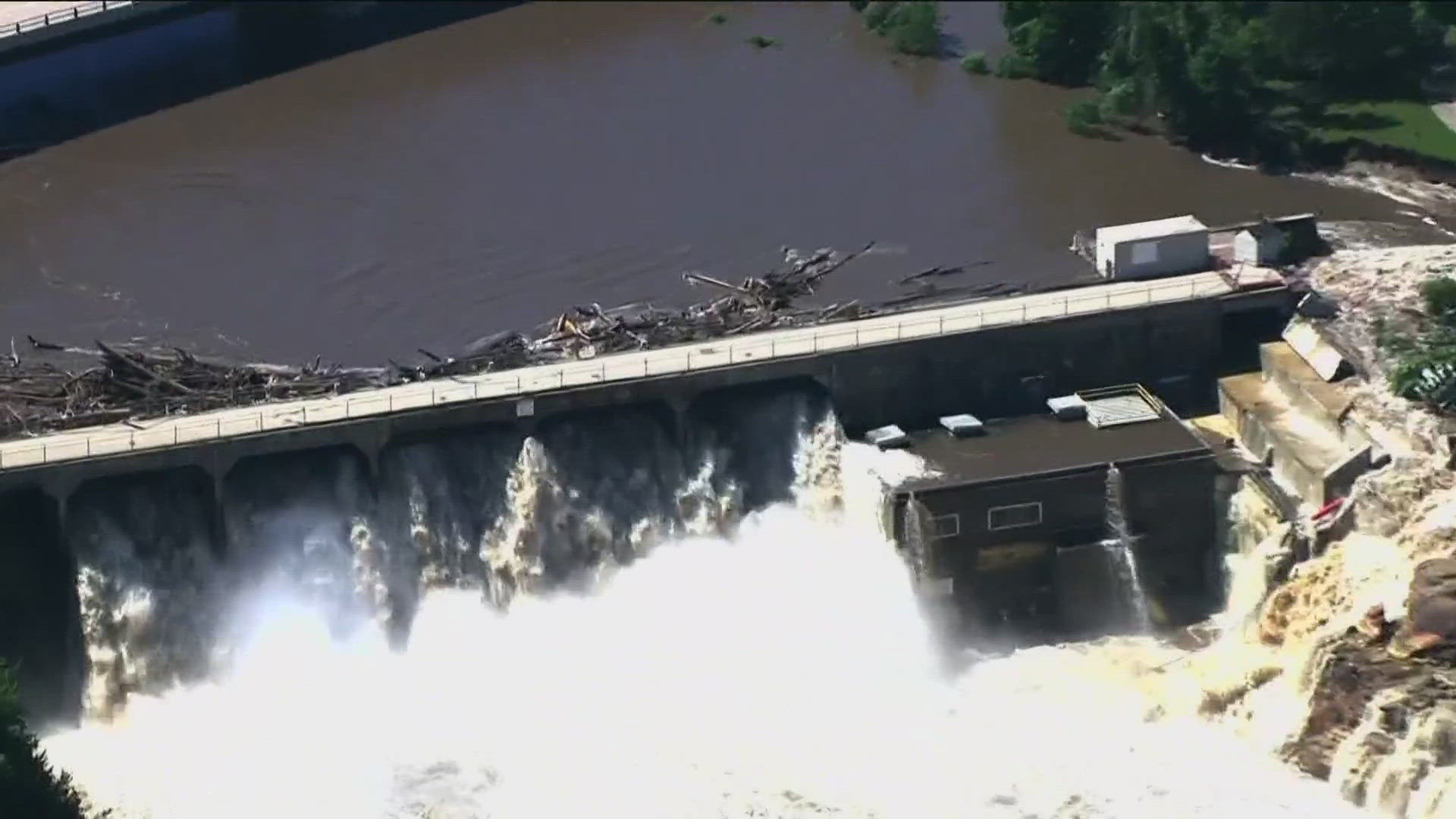Dam Failure Overview

The Rapidan Dam failure occurred on September 27, 1879, in the Shenandoah Valley of Virginia, United States. The dam, which was constructed to provide water for the Alexandria Canal, failed catastrophically, sending a wall of water downstream that devastated the town of Luray and killed over 100 people.
The Rapidan Dam failure in 1876 was a devastating event that flooded the James River Valley. Keyc news reported on the disaster, describing the collapse of the dam and the subsequent flooding. The tragedy serves as a reminder of the importance of dam safety and the potential consequences of structural failure.
The causes of the dam failure are complex, but they can be attributed to a combination of design flaws and construction errors. The dam was built on a weak foundation of limestone, and its design did not account for the possibility of heavy rainfall. In addition, the dam was not properly constructed, and its walls were not thick enough to withstand the pressure of the water.
Timeline of Events
- September 26, 1879: Heavy rains begin to fall in the Shenandoah Valley.
- September 27, 1879, 3:00 AM: The Rapidan Dam collapses.
- September 27, 1879, 3:30 AM: The wall of water reaches Luray, destroying the town and killing over 100 people.
Impact and Consequences

The failure of a dam can have devastating consequences, both immediate and long-term. The immediate impact of a dam failure is often catastrophic, with the potential for loss of life, widespread property damage, and significant environmental effects.
In the long term, a dam failure can have a significant impact on the local economy and social fabric of the affected area. The loss of infrastructure and property can lead to economic losses, while the displacement of residents can disrupt communities and strain social services.
Case Studies
There are numerous examples of dam failures throughout history, each with its own unique set of impacts and consequences. One of the most well-known examples is the failure of the Banqiao Dam in China in 1975. The failure of this dam resulted in the deaths of over 26,000 people and the destruction of over 1 million homes.
Another example is the failure of the Teton Dam in Idaho in 1976. This failure resulted in the deaths of 11 people and caused significant property damage. The Teton Dam failure also had a significant environmental impact, as it released a large amount of sediment into the Snake River.
Engineering Analysis: Rapidan Dam Failure

The Rapidan Dam failure exposed severe design and construction flaws that contributed to its catastrophic collapse. Examining these deficiencies and the lessons learned from this incident is crucial to enhancing dam safety practices and regulations.
Design Deficiencies
The dam’s design failed to account for the erosive forces of the Rapidan River. The spillway was too small to handle the volume of water during heavy rainfall, leading to overtopping and erosion of the dam’s foundation.
Construction Flaws
The dam’s construction process was marred by poor quality control and inadequate supervision. The concrete used was of low quality, and the dam’s foundation was not properly prepared, leading to seepage and weakening of the structure.
Lessons Learned
- Design dams with spillways capable of handling extreme rainfall events.
- Ensure thorough geological investigations and proper foundation preparation.
- Implement rigorous quality control measures during construction.
Recommendations for Future Dam Design and Construction, Rapidan dam failure
- Incorporate redundant safety features into dam designs.
- Utilize advanced materials and construction techniques to enhance dam resilience.
- Establish comprehensive dam safety monitoring and inspection programs.
The catastrophic failure of the Rapidan Dam in 1894 sent shockwaves through the engineering community. Its collapse led to the loss of lives and property, and raised questions about the safety of dams. For more information on the history and impact of the Rapidan Dam failure, including its significance in the Mankato, Minnesota area, visit rapidan dam mankato mn.
The lessons learned from this tragedy have played a crucial role in improving dam safety regulations and design practices, ensuring the protection of communities downstream.
The Rapidan Dam failure, a tragic event that occurred in 1889, unleashed a devastating flood that surged through the picturesque Minnesota River valley. The relentless waters carried away homes, bridges, and lives, leaving a trail of destruction in their wake.
The memory of that fateful day serves as a poignant reminder of the destructive power of nature and the importance of vigilance in maintaining our infrastructure.
The Rapidan Dam failure in 1889 unleashed a devastating flood that ravaged the Blue Earth River Valley, forever altering the landscape of Blue Earth, Minnesota. The torrent of water swept away homes, bridges, and livelihoods, leaving an indelible mark on the region’s history.
The disaster served as a sobering reminder of the destructive power of nature and the importance of responsible dam construction and maintenance.
The catastrophic Rapidan Dam failure in 1962 sent shockwaves through the region, including Blue Earth County, where the Le Sueur River it had held back overflowed its banks. The disaster, a grim reminder of the fragility of human infrastructure, left an enduring scar on the county’s landscape, a testament to the forces that shape our world.